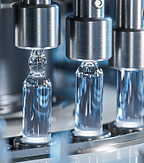Artikel | 26 november 2019
Selection, clearance and registration of trademarks for pharmaceutical products in Sweden

Trademark protection in Sweden can be obtained by filing a national or EU trademark application or an international registration designating Sweden or the European Union. Unlike the EU Intellectual Property Office (EUIPO), the Swedish Patent and Registration Office (PRV) will examine applications on both absolute and relative grounds.
Relevant national and international regulatory bodies and requirements
If the PRV finds that a proposed trademark is distinctive and not confusingly similar to any prior rights, the trademark will be registered. Post-registration follows a three-month opposition period during which third parties may file oppositions. On 1 January 2019 the Swedish Trademark Act was amended, indicating that the owner of a newly registered trademark can demand that the trademark owner on which an opposition is based shows use of its trademark, provided that the trademark is more than five years old. Under the previous trademark law, objections based on non-use could be tried only in a separate revocation action, and if the defendant challenged the revocation action, the case had to be decided before a court.
Applicants are encouraged to perform clearance searches before selecting a trademark. This is to avoid both obstacles to registration and trademark infringement. It is recommended that clearance searches cover trademark, company name and, where relevant, pharmaceutical international non-proprietary name (INN) databases. When assessing the risk of confusion with prior rights in the field of pharmaceuticals, the PRV and the Patent and Market Court have adopted a stricter position than for other fields, due to the potential harmful effects of actual confusion on the market. Statements in the preparatory works to the Swedish Trademark Act support this position and a PRV examiner has also stated this to be the PRV’s current position, although there are no recent decisions to confirm this.
The European authorities have established a different approach. Contrary to the Swedish position, the European authorities have concluded that relevant consumers are likely to have a heightened degree of attentiveness with respect to both prescription and non-prescription drugs (*Novartis v OHIM – Sanochemia Pharmazeutika* (regarding the trademark TOLPO-SAN; Case T-331/09)). This position allows a somewhat higher degree of similarity between trademarks in the pharmaceutical field than in other fields.
Non-traditional trademarks
The shape of goods (eg, the shape of a pharmaceutical pill or its packaging) is, in theory, registrable in Sweden. To be registrable and distinctive, the shape or packaging must deviate from the common design in the field and the specific design elements cannot depend on or simply confer a technical function. Further, a shape may also be distinctive if it has particular features which make consumers associate the shape with a particular company. In addition, applicants for this type of non-traditional trademark must typically submit substantial evidence of acquired distinctiveness in order to be granted registration.
Regulatory considerations/confusion with INNs
Apart from the legal requirements described above, a company must also consider regulatory requirements when selecting a trademark. Pharmaceutical products may be marketed in Sweden following marketing authorisation granted by the Swedish Medical Products Agency (MPA) or the European Medicines Agency (EMA). The (invented) name of the pharmaceutical product is an integral part of this authorisation. The MPA reviews name proposals based on applicable regulations as well as the MPA’s own guidelines, which are in turn based on guidelines from the EMA.
When assessing an invented name, the MPA focuses on public health rather than trademark confusion. The MPA’s guidelines include a number of absolute requirements, as well as general recommendations. According to the absolute requirements, the invented name may not:
• convey misleading therapeutic and pharmaceutical connotations;
• be misleading with respect to the composition of the product;
• result in confusion with an existing or recently de-registered medicinal product;
• convey a promotional message or risk of being interpreted as offensive or have an inappropriate connotation;
• consist of proper nouns or words with a well-established meaning; and
• be the same name as the name of the company.
Where the MPA considers there to be a risk of confusion between the proposed name and the name of the existing medicinal product, the MPA may take other distinctive factors into account in its assessment. These factors include the type of medicinal product, route of administration, indication and prescription status, group of patients and the degree of similarity versus the potential harm to patients in the event of confusion. With respect to the risk of confusion with de-registered medicinal products, a particular assessment must be made and usually at least five years should have passed since the medicinal product was de-registered before the same or a similar name can be used for a different product.
In addition, the MPA recommends that companies comply with World Health Organisation (WHO) guidelines. The WHO recommends that invented names should not originate from INNs or consist of INN stems. The purpose of this is to avoid confusion between different medicinal products and not obstruct the establishment of new INNs.


